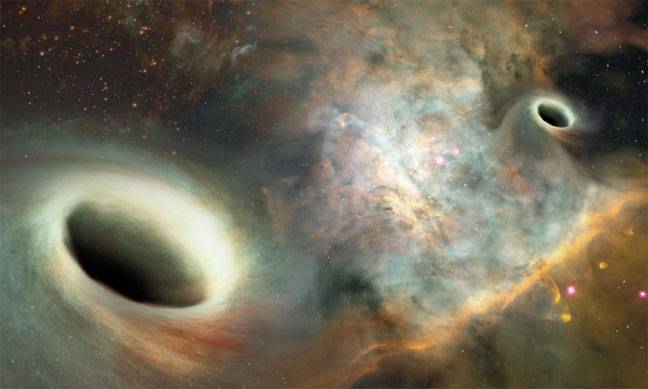DM NEW MEXICO - For the first time ever, astronomers have been able to observe and measure the orbital motion between two supermassive black holes hundreds of millions of light years from Earth.
Researchers say the discovery, which took 12 years to confirm, will allow them to start to understand what leads up to the merger of supermassive black holes that creates ripples in the fabric of space-time.
It will also lead to a new understanding of the evolution of galaxies and the role these black holes play in it.
‘For a long time, we’ve been looking into space to try and find a pair of these supermassive black holes orbiting as a result of two galaxies merging,’ said UNM Professor Greg Taylor.
‘Even though we’ve theorized that this should be happening, nobody had ever seen it until now.’
UNM Department of Physics & Astronomy graduate student Karishma Bansal is the first-author on the paper, ‘Constraining the Orbit of the Supermassive Black Hole Binary 0402+379’, recently published in The Astrophysical Journal. She, along with and colleagues at Stanford, the US Naval Observatory and the Gemini Observatory, have been studying the interaction between these black holes for 12 years.
In early 2016, an international team of researchers, including a UNM alumnus, working on the LIGO project detected the existence of gravitational waves, confirming Albert Einstein’s 100-year-old prediction and astonishing the scientific community.
These gravitational waves were the result two stellar mass black holes (~30 solar mass) colliding in space within the Hubble time.
Now, thanks to this latest research, scientists will be able to start to understand what leads up to the merger of supermassive black holes that creates ripples in the fabric of space-time and begin to learn more about the evolution of galaxies and the role these black holes play in it.
When Dr. Taylor gave me this data I was at the very beginning of learning how to image and understand it,’ said Bansal. ‘
And, as I learned there was data going back to 2003, we plotted it and determined they are orbiting one another. It’s very exciting.’
For Taylor, the discovery is the result of more than 20 years of work and an incredible feat given the precision required to pull off these measurements.
While the technical accomplishment of this discovery is truly amazing, Bansal and Taylor say the research could also teach us a lot about the universe, where galaxies come from and where they’re going. ‘The orbits of binary stars provided tremendous insights about stars,’ said Bob Zavala, an astronomer with the US Naval Observatory. ‘Now we’ll be able to use similar techniques to understand super-massive black holes and the galaxies they reside within.’
Continuing to observe the orbit and interaction of these two supermassive black holes could also help us gain a better understanding of what the future of our own galaxy might look like.
Right now, the Andromeda galaxy, which also has a SMBH at its center, is on a path to collide with our Milky Way, meaning the event Bansal and Taylor are currently observing, might occur in our galaxy in a few billion years.
‘Supermassive black holes have a lot of influence on the stars around them and the growth and evolution of the galaxy,’ said Taylor.
‘So, understanding more about them and what happens when they merge with one another could be important for our understanding for the universe.’
Bansal says the research team will take another observation of this system in three or four years to confirm the motion and obtain a precise orbit. In the meantime, the team hopes that this discovery will encourage related work from astronomers around the world.






